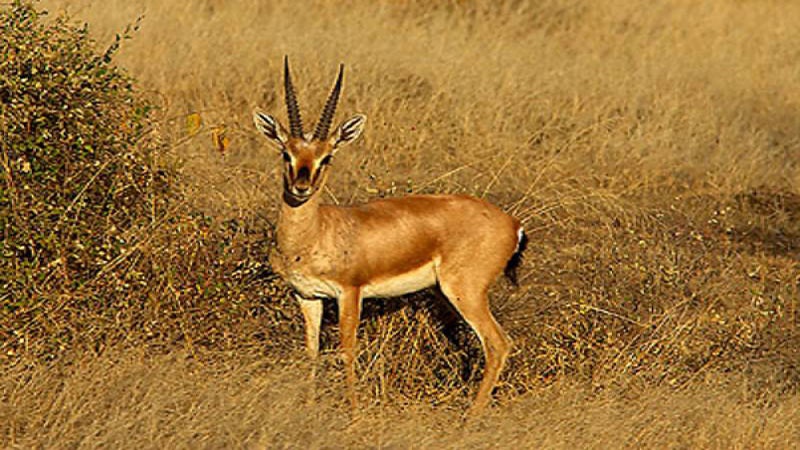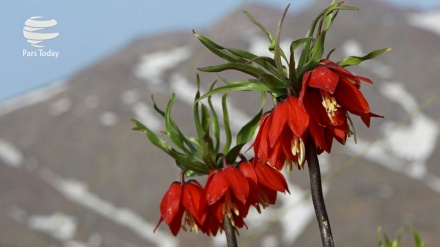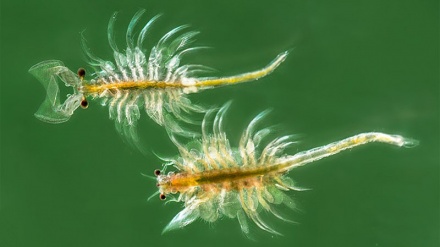Iran’s rare animal and plant species (9)
Dear listeners, welcome to this week’s episode of the series Iran’s Rare Animal and Plant Species. Today, we study Chinkara, which is another rare Iranian animal.
One of the most beautiful and delicate animals of Iran’s nature is Chinkara, which has been on the verge of extinction throughout the recent years due to drought and poaching. This animal lives in India, Pakistan, and Iran.
Chinkara is a bovid which highly resembles deer, but maintains a number of differences in appearance in comparison to deer, which makes it possible to distinguish these two animal species from each other. Chinkaras have short, dark yellowish hair, turning white in color round abdomen and thighs. This is while deer is bright yellow in color. Chinkaras usually weight round 25 kilograms and both male and female chinkaras have horns, while only buck maintains horns. Moreover, the horns of chinkara are not arched as such and are nearly parallel to each other, in contrast to deer. Also, the length of male Chinkara’s horns is in average ten centimeters shorter than the horns of deer.
Chinkara appropriately bears the conditions of deserts and needs a short volume of water, while quenching its thirst via plants. It is also a fast moving animal and can run with the speed of 80 kilometers per hour. Chinkaras do not leap while running. Chinkaras usually prefer to reside on hills, in comparison to living on flat plains. The most important enemies of Chinkaras are Cheetahs. Chinkaras are also fearful of human beings, and have strong senses of smell, and hearing, and powerful eyesight, which enable them to swiftly recognize and identity the source of danger or threat and to flee the scene.
The mating season of chinkaras throughout their habitats in Iran, are partly different from each other. In warm regions, mating season starts in early fall, while in chilly regions, the mating season begins late fall. Like other bovid species, throughout the mating season, major confrontations take place among male chinkaras for mating with female chinkaras, which at times could even lead to injury or death of one of them. With the exception of the mating season, male and female chinkaras usually live in separate groups within their natural habitats. Upon the start of the mating season, the herds of male chinkaras usually form smaller groups, with each leading one or few female chinkaras. In the case of entry of a male chinkara to a herd of female chinkaras which is led by another male chinkara, a fierce battle breaks out between the two male chinkaras; in the majority of which elder male chinkaras emerge victorious. In fact, after a few moments of confrontation, usually young male chinkaras leave the battle scene in favor of the elder male chinkara. Otherwise, their insistence could lead to their injury and death.
The pregnancy of chinkaras lasts round 170 days and they usually deliver their fawns in early spring. The female chinkaras usually distance themselves from the other herd members within the waning days of their pregnancy. At the time of delivery of fawn, the female chinkara fully assesses the situation in the region and thereafter delivers its fawn. This assessment considers factors such as climatic conditions, the direction of the wind, the direction of sunrays, and discovery of a highly safe location. The newborn fawn is very weak in the beginning and cannot move. The female chinkara; after licking, cleaning, drying, and feeding its fawn, hides it in an appropriate location, while grazing nearby and keeping an eye on its fawn. It usually feeds its fawn in early morning and late afternoon.
The fawns usually cannot walk along with female chinkaras in the first two weeks after their birth, and they sit and rest in this phase in time. The color of fawns highly matches their surrounding environment, enabling them to hide. The fawns usually do not react to humans up to a two-meter distance, but if they get closer, the fawns jump and swiftly flee the scene, while also informing female chinkaras of the threat, by making a number of sounds.
The habitats of chinkaras in Iran are usually deserts and steppes. They reside in southern Iran and on the margins of Iran’s deserts. Currently, in order to prevent their extinction, their habitats have turned into conservation regions in a bid to prevent poachers from hunting this rare animal. Today, the Islamic Republic of Iran’s rangers are making every effort to protect and safeguard chinkaras, in an effort to prevent the extinction of this rare and highly valuable animal.
MR/SS



